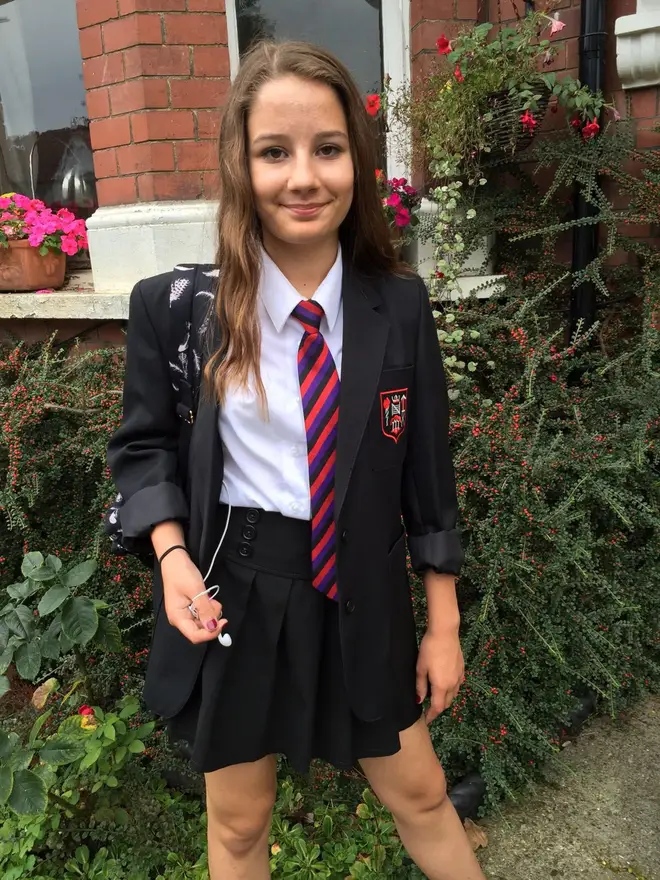
Ali Miraj 12pm - 3pm
21 September 2022, 16:44

The schoolgirl’s father gave evidence from the witness box at North London Coroner’s Court on Wednesday.
Schoolgirl Molly Russell had accessed material from the “ghetto of the online world”, her father has told an inquest.
Ian Russell said his daughter received emails from social media giant Pinterest “promoting depressing content”, including “18 depression pins you might like” and “new ideas for you in depression”.
He said the material his daughter had been exposed to on the internet was “hideous”, adding he was “definitely shocked how… readily available” it was on a public platform for people over the age of 13.
At North London Coroner’s Court on Wednesday, Mr Russell questioned how his 14-year-old daughter knew “how to get into this state” before her death, adding: “Whatever steps have been taken (by social media companies), it’s clearly not enough.”

Molly, from Harrow, north-west London, is known to have viewed material linked to anxiety, depression, self-harm and suicide on social media before ending her life in November 2017, prompting her family to campaign for better internet safety.
Giving evidence from the witness box, Mr Russell was taken through his witness statement, which read: “I also looked briefly at Molly’s YouTube account and saw a… pattern – many normal teenage ‘likes’ and ’follows’, but a similar high number of disturbing posts concerning anxiety, depression, self harm and suicide.
“On the family computer I saw that Molly continued to receive emails after her death from another social media platform, Pinterest.
“I was shocked to see the subject lines of the emails clearly promoting depressing content.”
He added: “It is just the bleakest of worlds. It is not a world I recognise.
“It is a ghetto of the online world.”
Mr Russell said the “algorithms” then recommended similar content.
He was taken through a series of social media posts liked by Molly on Instagram prior to her death, which Oliver Sanders KC described as a “litany of self hate”.
Mr Sanders later said the posts saved by Molly on Pinterest were “romanticising self harm” which were something for people to “keep to themselves”.
Mr Russell responded: “Absolutely. Even though I have seen these before, seeing them again still affects me now. And this is just the 5th of September. This is just a fraction of what Molly was seeing on a daily basis.”
Coroner Andrew Walker then asked Mr Russell if it was fair to describe it as “a world of despair”.
Mr Russell responded: “Absolutely.”
Mr Russell added that he looked again on Instagram in August this year after changes had been made by Meta, but still found “horrific content”.
The inquest heard that among the “hundreds of usual connections a teenager would have”, there were more than 40 accounts that she followed and 10 accounts that followed Molly that “were connected, in some way, to anxiety, depression, self harm or suicide”.
Mr Russell told the inquest he and Molly’s mother Janet were “definitely shocked how hideous, graphic, harmful it was and concerning that it was readily available on a public platform for people who are 13 and above”.
According to Instagram’s guidelines, the website requires someone to be at least 13 to create an account in some jurisdictions.
Mr Walker continued to take the 59-year-old through his witness statement, in which he said he had believed Molly’s change in behaviour was down to “normal teenage mood swings”.
Giving evidence to the coroner, Mr Russell confirmed his statement was correct.
It read: “All the immediate family noticed a change in Molly’s behaviour in around the last 12 months of her life.
“Molly became more withdrawn and spent an increased amount of time alone in her room, but she still happily contributed to family life. Molly also found it hard to get to sleep and it appeared she was often the last of us awake.
“Like most of us, Molly often had her phone with her although we had a strict rule at home of no phones at the dining table. She used that and her iPod Touch for a whole range of things.
“I knew Molly had an Instagram account and a Twitter account as I also had accounts on these platforms and we ‘followed’ each other, as did other members of the family.
“Molly closed the Twitter account of hers that we were all following and it was only after her death that I found out she had opened another account on Twitter.
“We talked about risks from strangers online, not giving out personal details, only sharing photographs with friends, online bullying – that type of thing.
“We thought Molly’s changed behaviour in 2017 was just a reflection of normal teenage mood swings, coinciding with puberty, and although we were concerned we were not overly concerned.
“With the benefit of hindsight, I am able to recall some instances which did not seem as concerning at the time but take on more significance now.”
The coroner asked him about a conversation the pair had in the months ahead of her death.
The inquest heard that Mr Russell spoke to Molly about how she was feeling while the pair were driving together in September 2017, but she “brushed it off”.
Giving evidence, he said: “I remember talking to Molly and questioning her about the concerns we had as parents.
“They were the sort of things we may have had with her sisters or other parents would have had with their children around the world.
“I questioned her… to see if she would open up to anything that might be troubling her.
“She brushed it off and seemed to be unflustered by the question.”
After telling the court what he had seen when he found his daughter after her death, Mr Russell said: “I thought to myself, how does anyone who is 14 know how to get into this state and how does someone who is 14 know how to end her life so effectively?”